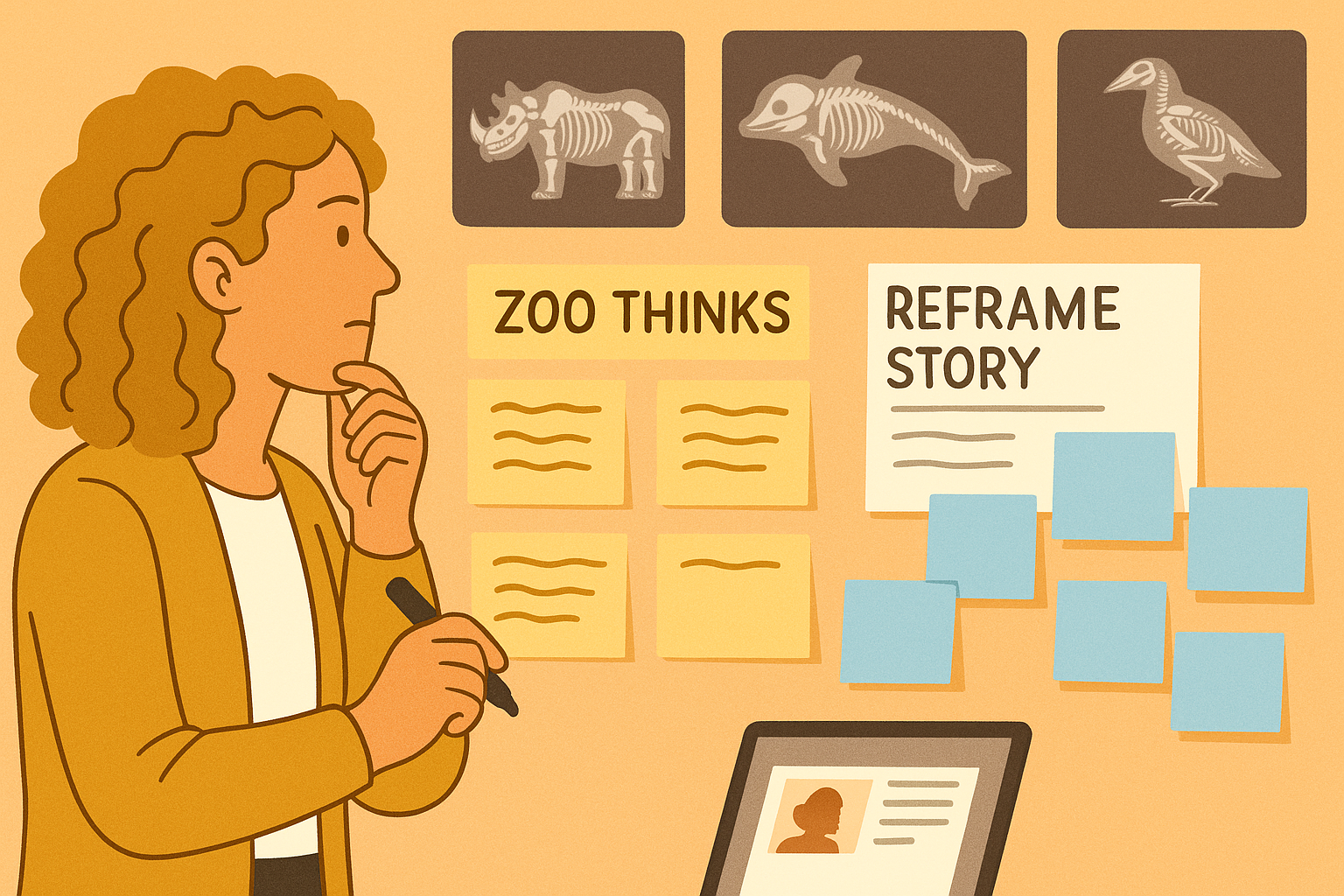Making Conservation Newsworthy
Overview
Helping Brookfield Zoo Chicago Understand What the Public Cares About
A UX research case study about finding the story behind the science
My Role
The Challenge
My role at Public Communications Inc. (PCI) was to surface user-centered insights that would translate complex veterinary science into national stories that resonated with the general public.
Brookfield Zoo wanted to raise public awareness of its scientific leadership and ultimately, increase zoo attendance and engagement. But the challenge was clear — the internal team was too close to the work. They needed help understanding what the public would actually care about.
Understanding The Users
I focused on two primary user groups
The public: busy, curious people with a limited attention span. Most love animals, but may not follow science or medicine closely. We needed to make them feel something.
The media: as gatekeepers to public attention, journalists need a fresh, visual, emotionally compelling, and authentic story that fits their beat. We wanted a top-tier national outlet to make the story unrefutable. Enter the New York Times.
Brookfield Zoo, like any internal team, brought ideas it believed were important. My job was to evaluate those ideas through a user-centered lens and guide the team toward the most resonant narrative.
The Insight
The Zoo and Aquarium Radiology Database (ZARD) was a groundbreaking tool—but it wasn’t inherently user-friendly. What made it compelling wasn’t the data; it was the why. The turning point came when I reframed the pitch around Layla, a critically endangered black rhino whose CT scan revealed the need for the database in the first place. This emotional hook aligned user curiosity with institutional goals.
To increase the story’s chances of engagement, I also recommended timing the pitch to coincide with Halloween. A story about animal skeletons—paired with never-before-seen radiographic images—was a natural fit for the season. This added cultural relevance helped make the story even more timely and shareable.
My Role
Conducted stakeholder discovery with zoo vets and execs to understand internal goals
Synthesized inputs into a user-centered narrative framework
Defined user personas (public readers and science journalists)
Drafted a tailored pitch for New York Times science reporter Emily Anthes
Created a briefing doc to prep Brookfield Zoo's CEO for a structured research conversation (media interview)
Coordinated messaging across seven institutions to ensure clarity and consistency
Managed delivery of validated assets (quotes, visuals, fact-checking)
The Process
This project followed a research and synthesis cycle:
Discovery: I gathered inputs from subject matter experts and understood the institutional goals.
Analysis: I identified misalignments between what the zoo thought was interesting and what users (the public) would care about.
Synthesis: I reframed the story, developed user-centered messaging, and tested potential pitches.
Execution: I delivered the story to the NYT through a personalized pitch and supported a seamless reporting process through asset coordination.
Impact
Why It Matters
Reflection
The New York Times ran a full feature: “When Animals Go to the Hospital, These Are Their X-Rays” (Oct 26, 2024)
Timed perfectly for Halloween, the story combined science, animal care, and spooky visuals to drive reader engagement
Estimated reach: millions of print + digital readers
Zoo positioned as a national leader in animal health innovation
ZARD launched with 1,000+ images from 50 species, targeting 10,000 by 2026
Just like in product development, institutions often believe their internal priorities are self-evident. But understanding your audience requires research. By framing the science through the eyes of real users, we made it more meaningful, memorable, and actionable.
UX research isn’t just about wireframes and usability. It’s about insight. My work on this project reinforced the value of listening, translating, and aligning stories to what users actually need—even (and especially) when that differs from what internal teams assume.





